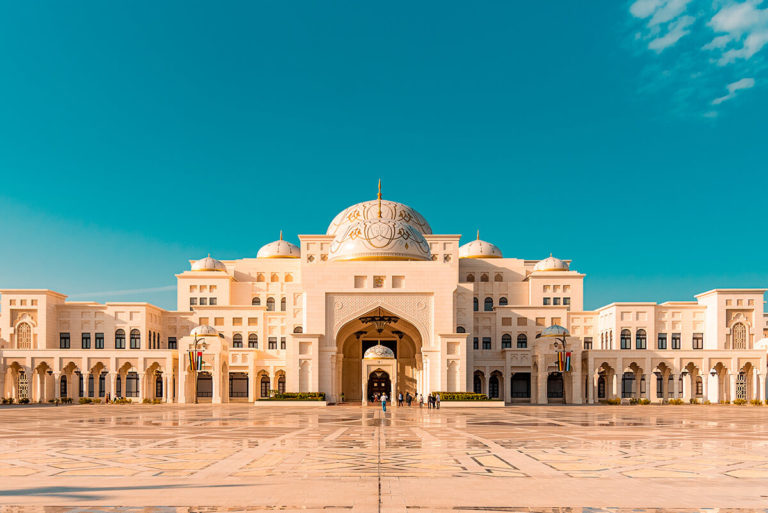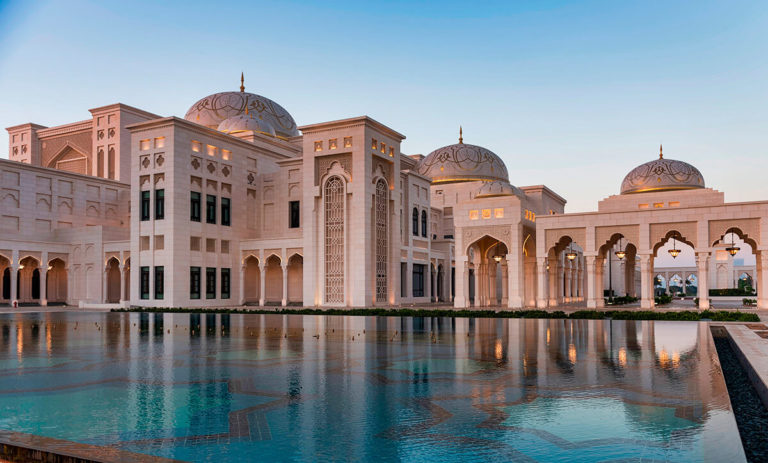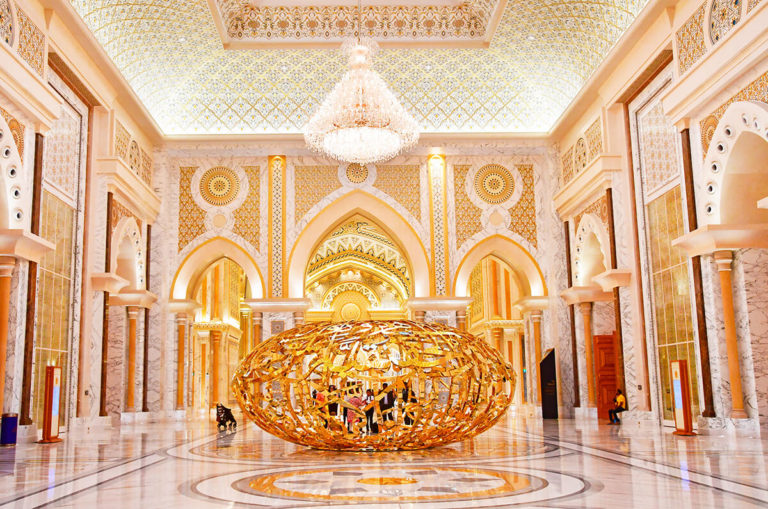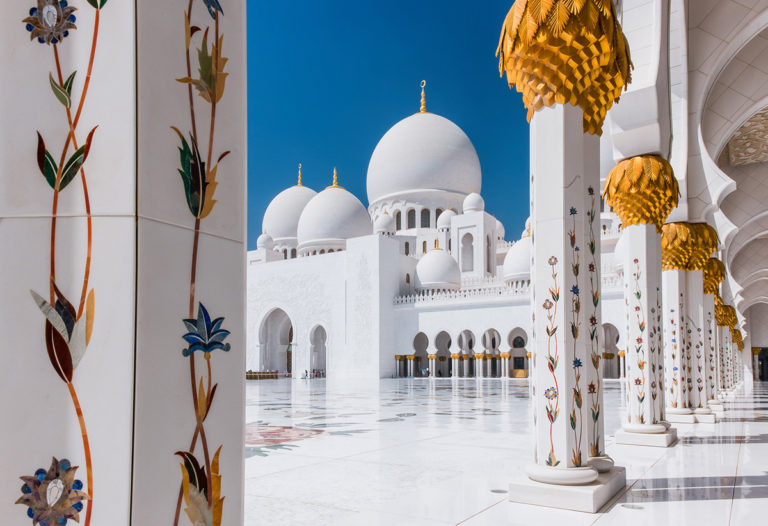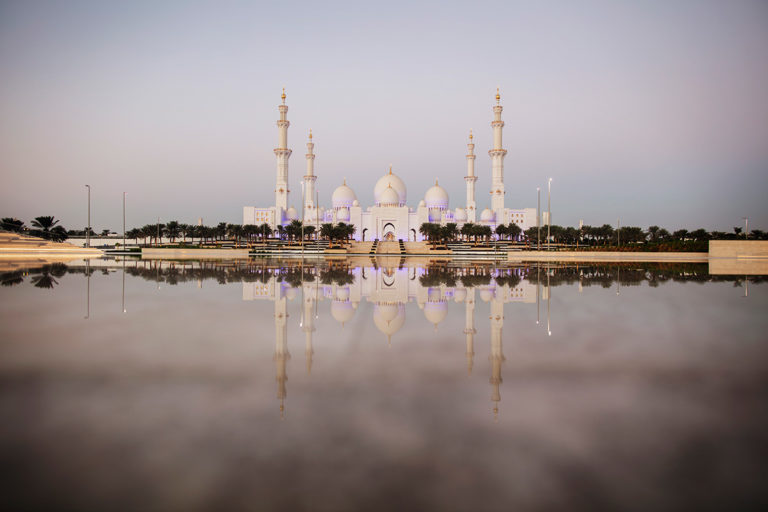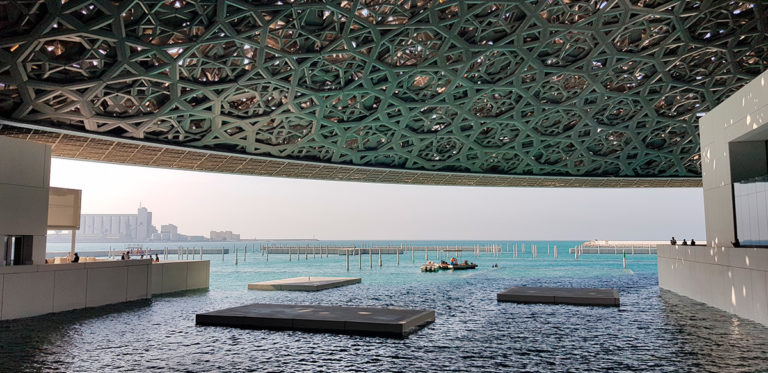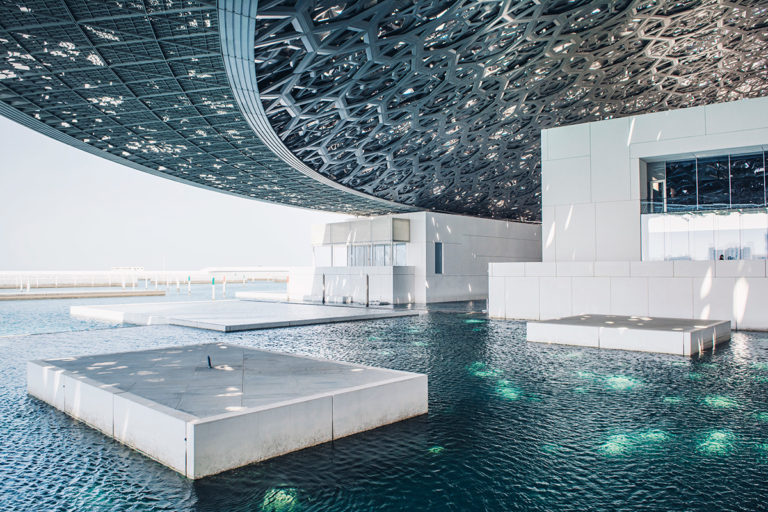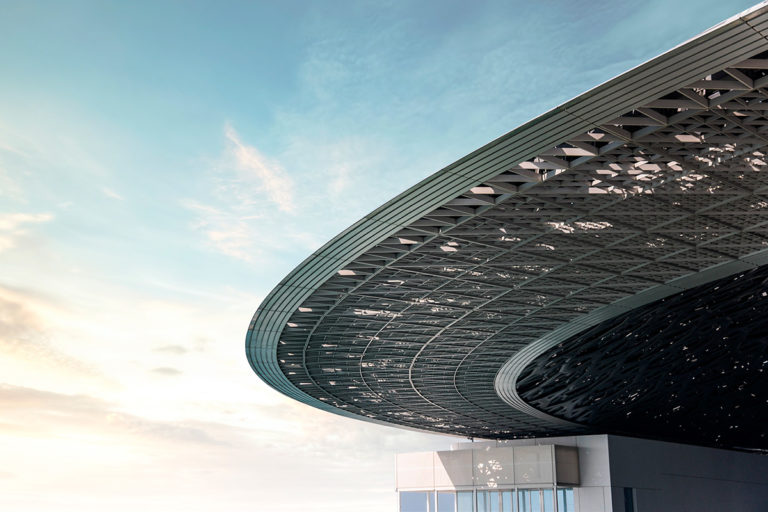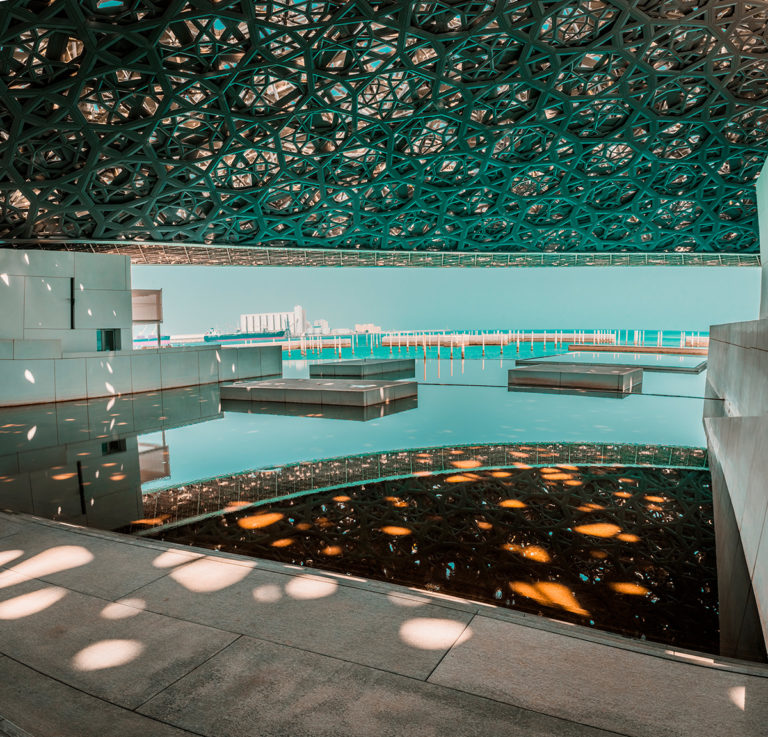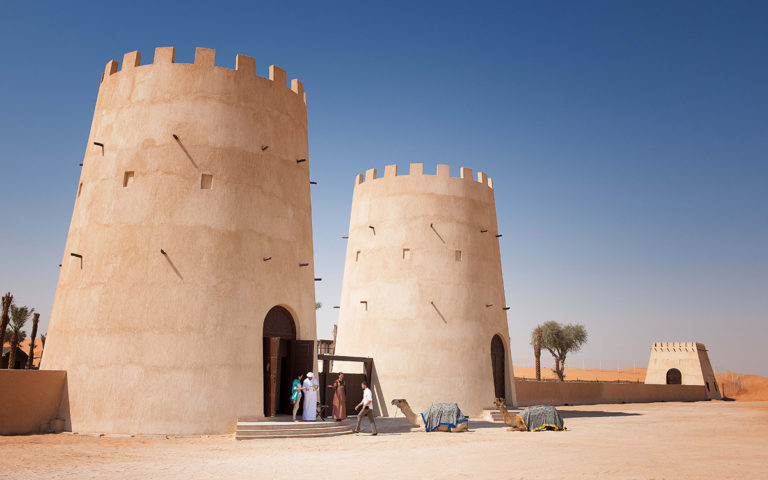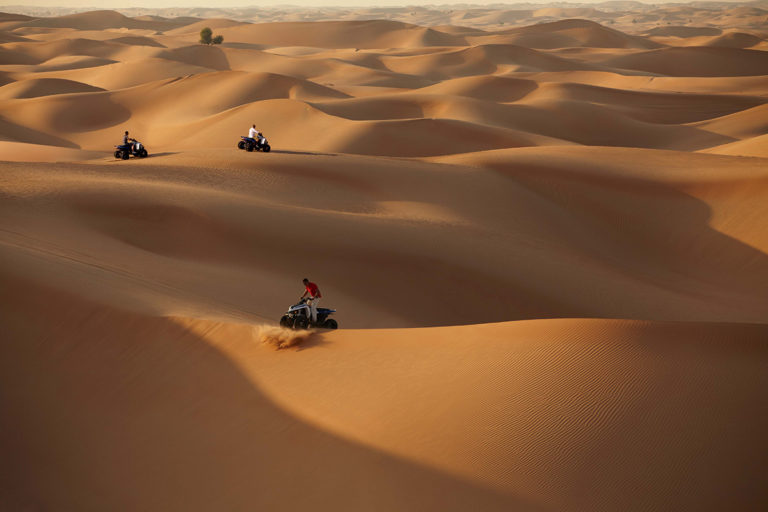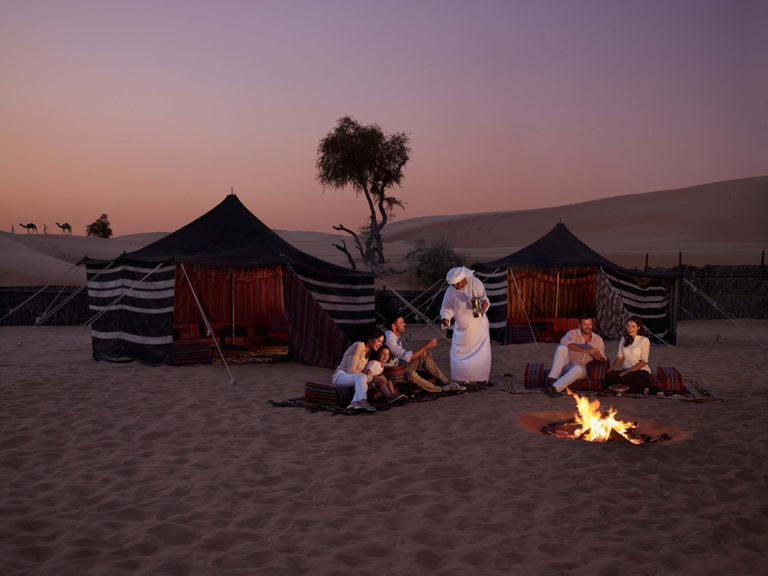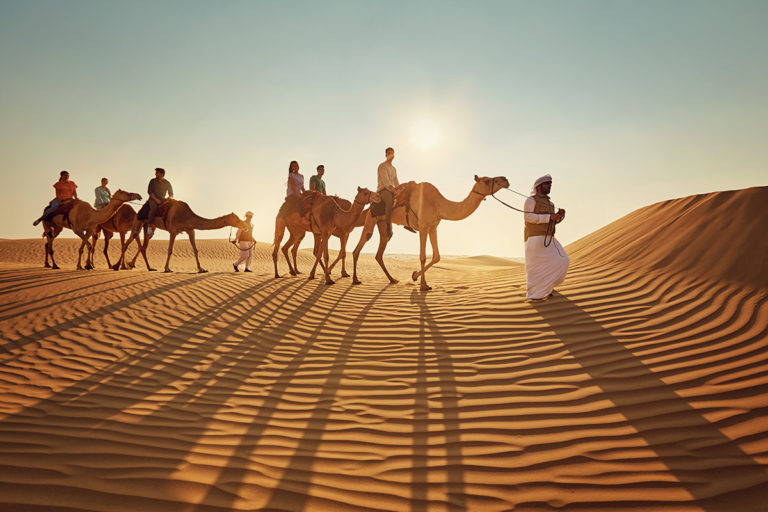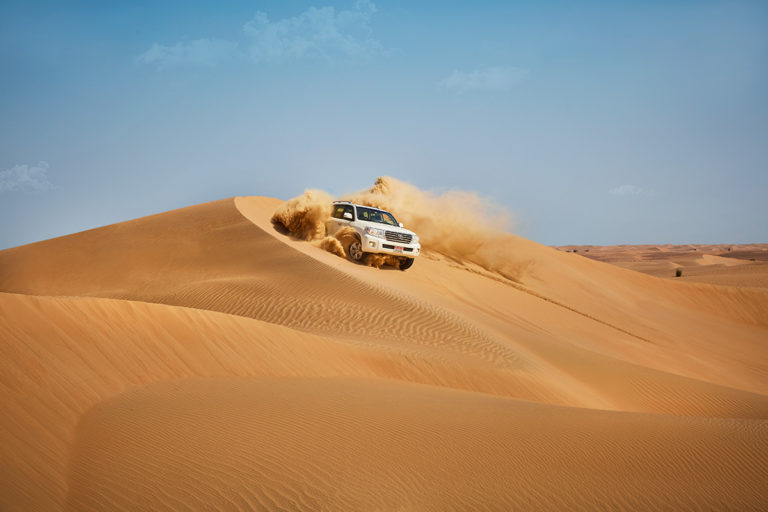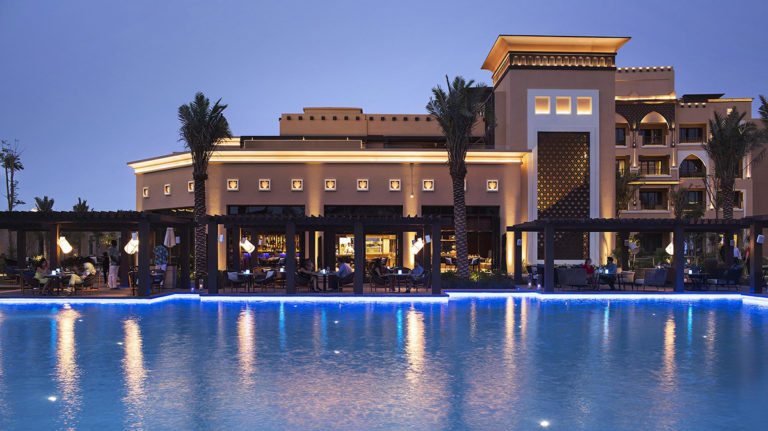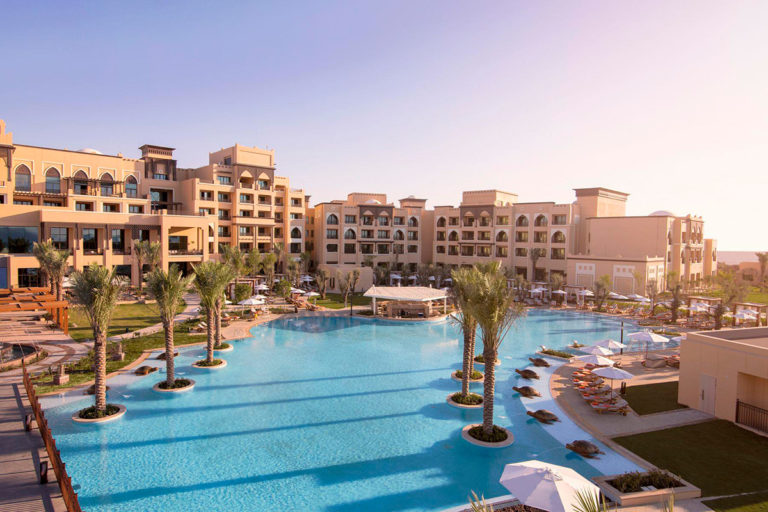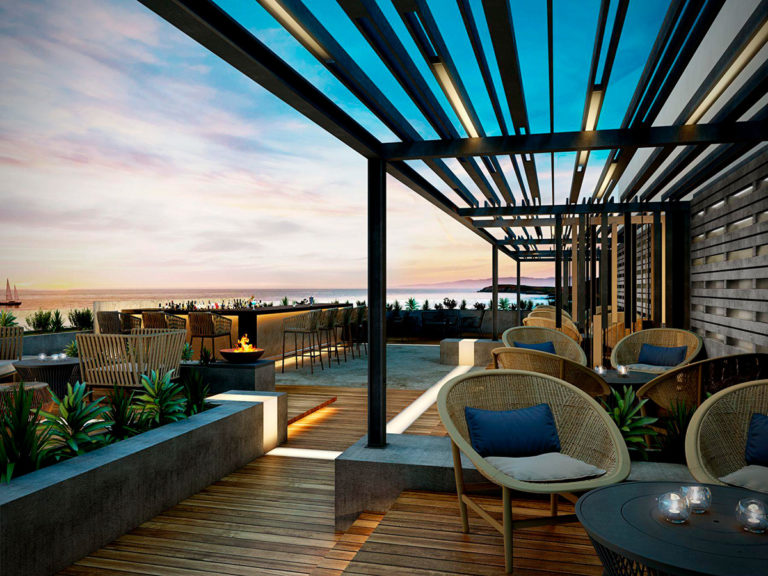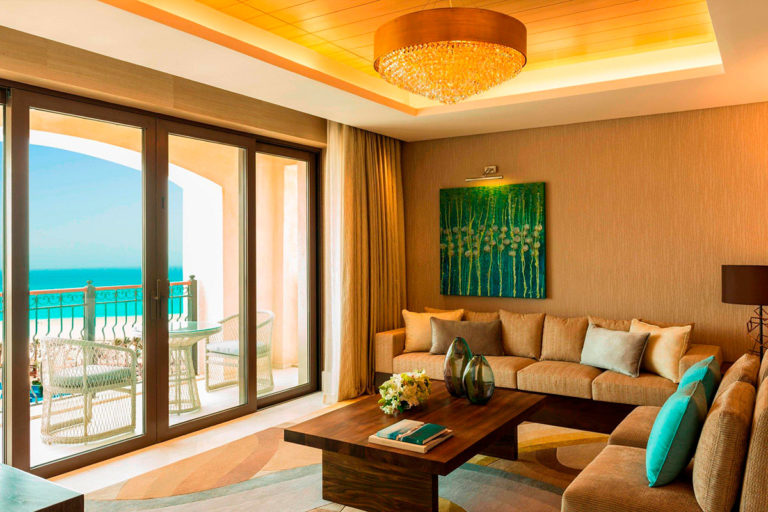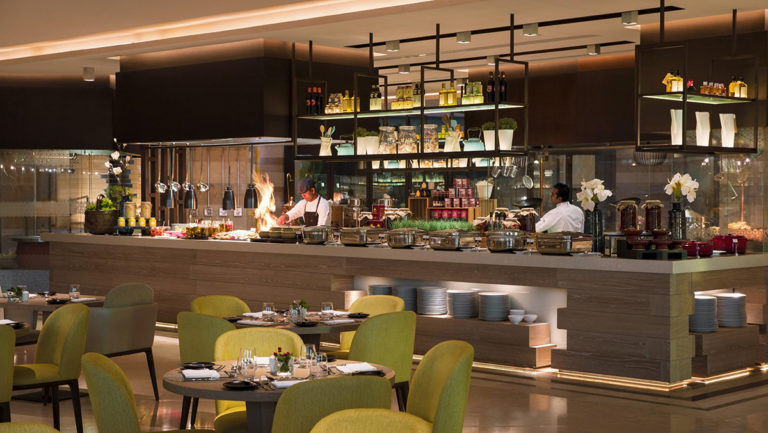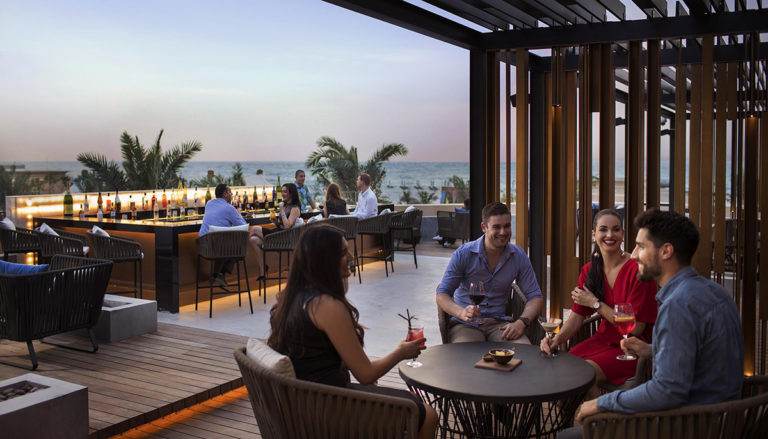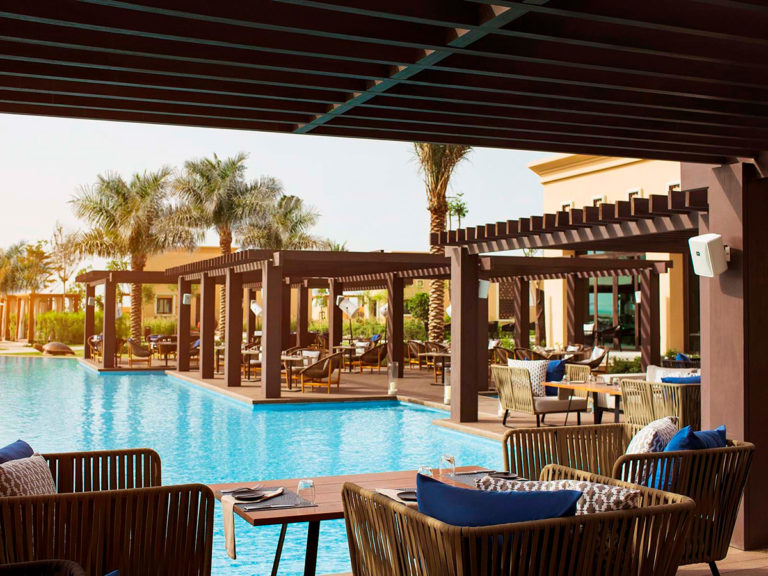Qasr Al Watan (Presidential Palace)
You should start your acquaintance with Abu Dhabi from there – the palace will set the right degree of luxury of the entire trip. And yes, in Abu Dhabi the word “luxury” sounds completely different, and is pronounced, it seems, three times more often than any linguistic propriety allows. Get used to it. Otherwise, it is impossible to describe all that this emirate, bathed in oil, generously “pours” the European tourist’s eyes with. Qasr Al Watan is the apotheosis of eastern grandeur (only Abu Dhabi’s Sheikh Zayd Mosque can compete with it). Made of marble and delicate stained glass windows the building rises above the island of Ras al-Akhdar and literally stuns with its beauty. The interiors are appropriate: mosaic paintings, gilding, glittering glossy marble slabs, velvet couches with plenty of brocade cushions, crystal chandeliers playing with thousands of lights. It is noteworthy that the color palette in the Qasr Al Watan decor contains just three colors: blue (symbolizing the sky), yellow (the sand in the Rub al-Khali desert) and white (kandoura – the men’s Arab hoodie). The palace opened to the general public only last year, 2019. Here you can see the halls of official receptions in the traditional Arab style, an exhibition of ancient artifacts with folios from the Arab Golden Age, a collection of gifts given at different times to monarchs and representatives of the Cabinet, a library with over 50 thousand books. But to see everything, perhaps, one visit will not be enough. The Presidential Palace is open to visitors from 10 in the morning, but you should come here in the afternoon so that in the evening when it gets dark, be sure to catch a multimedia show on the facades of the building that tells about the development of the Emirates from antiquity to the present day. This is a good reason to see Qasr Al Watan for yourself.
Sheikh Zayd Mosque
One of the main attractions of the emirate and one of the six largest mosques in the world. Not to see it means not to be in Abu Dhabi. Named in honor of Sheikh Zayd ibn Sultan Al Nahyan – the founder and first president of the United Arab Emirates. Modern Abu Dhabi, as the world knows it, is entirely his merit. The manna from the oil fields discovered in 1958 has turned a run-down fishing village into the richest and most modern emirate with one of the highest living standards in the Arab East. The construction of the great mosque was initiated during the life of the ruler, but the father of the nation did not get to see it in all its glory, he died in 2004 and was buried nearby. Officially Sheikh Zayd Mosque was opened in 2007, and the eyes of the delighted public appeared snow-white complex with four minarets and 82 domes, covered with 24-carat gold and decorated with semi-precious stones. The mosque was built of the world’s most expensive white marble of laza variety, brought from Italy. It seems that everything is the most beautiful here: the biggest hand-made carpet in the world is covering the Mosque’s marble floor, the biggest chandelier in the world (among mosques), decorated with gilt and Swarovski crystals, is hanging in one of its halls… The list goes on and on, but it is better to see it once, especially as the Sheikh Zayd Mosque is one of the most (again) democratic mosques in the world – not only Muslims, but all comers are admitted here, and absolutely for free. The only requirement is appropriate clothing (covering hands and feet, in addition, covered head for women) and behavior (stay only in the authorized places of the mosque, do not touch the Koran and architectural elements inside the prayer hall).
Louvre
Despite the fact that 94% of the UAE oil reserves are concentrated in Abu Dhabi, the emirate prefers to position itself primarily as the cultural capital of the state. And it confirms its ambitions with deeds – just look at the local Louvre, built on the Saadiyat Island to the design of one of the most famous architects of our time, the Frenchman Jean Nouvel. It is a case when a museum building deserves almost more attention than the art collection it contains. Its futuristic architecture resembles a space object that landed directly on the waters of the Persian Gulf. The building and the numerous water channels that fancifully connect around it are covered by a huge dome – it feels like a museum in the open sea. At sunset, it looks like the setting for a sci-fi movie. The museum collection includes about 300 pieces of art from the Louvre, the Centre Georges Pompidou, Versailles, and it seems to be an unprecedented deal in the art world of all times: for the right to use the name “Louvre” for 30 years, as well as for the rental of works of art, including paintings by Da Vinci, Van Gogh, Magritte, Matisse, Monet, Picasso, Gauguin and other great masters, the Emirate paid France a total of about €1 billion. A fascinating detail in this story was the fact that an enlightened French elite rose up against the deal at the time, indignantly claiming that “French museums are not for sale. But, as always, the only question was the price, and in the name of art Abu Dhabi, as it turned out, would not stand behind it. By the way, this is not going to stop there: in the near future on Saadiyat Island, a branch of the Solomon R. Guggenheim Museum and the Sheikh Zayd National Museum of History will join the Louvre.
Arabian Nights Ethnographic Village
A kind of journey within a journey, an immersion into the concentrated Orient, where the average European gets his portion of the Arabian tale. The village is located in the middle of the Al Khatim Desert, about two hours drive from Abu Dhabi, and don’t let the adjective “ethnographic” confuse you – they don’t take you around a museum and tell you about the fate of dusty artefacts. No, one comes here for entertainment, classic oriental entertainment, extreme and not so extreme. Undoubtedly, jeep safari on barchans belongs to the first category. You should be ready for this extreme, because the dunes are as high as a three-storey house and the jeeps unbelievably climb up and down from them in unison with the shouts of the passengers creating a real sandstorm. In the middle of this “merry slides” driver makes a stop and if you time it, you will see the most incredible and rapid sunset in your life. A less extreme, but no less colorful entertainment includes a ride on a camel in the desert, and after, of course, dinner under the open sky with traditional Arabian cuisine and the accompaniment of dancing Oriental beauties.
Saadiyat Rotana Resort& Villas Abu Dhabi
This resort hotel is a good reason to stay in Abu Dhabi for an extra few days. Everything here has perfect proportions – the ratio of traditional Arabian motifs and modern minimalistic design, the service, oriental-hospitable but unobtrusive, the combination of local and European cuisine in local restaurants, the relaxed beach, but quite secular atmosphere of a five-star city hotel. Unlike the lion’s share of Abu Dhabi hotels that are located on the Grand Canal, Rotana is on Saadiyat Island, on the sea, and has at its disposal beautiful views of the Persian Gulf and a beautiful beach with the cleanest sand and a comfortable, smooth entrance to the water in addition. In October, the water here reaches that very ideal degree for swimming, and its salinity is so strong that you can drift for hours on the soft waves, not bothering yourself with unnecessary movements. On the beach, if you are lucky, you can see Caretta caretta sea turtles, an endangered species listed in the Red Book. In order not to confuse the timid animals, who lay their eggs at night, the hotel even prohibits any artificial lighting. And every birth of a newborn turtle at Rotana is a real celebration and a reason to be proud.
Photo courtesy of the press service, shutterstock
